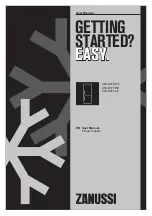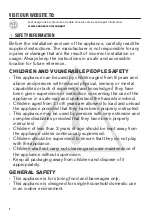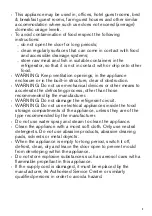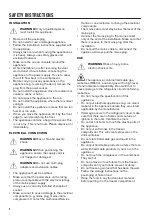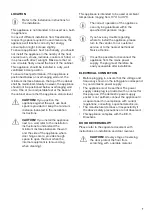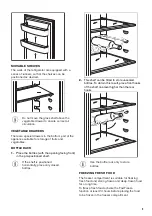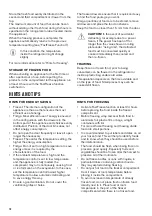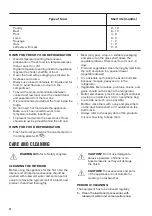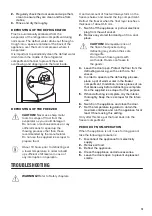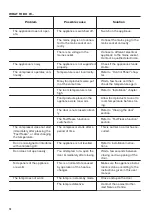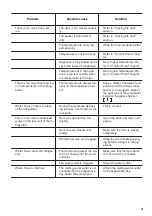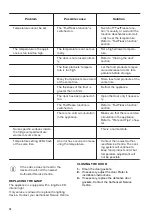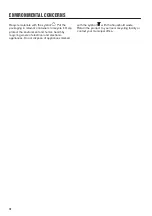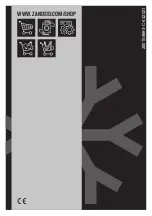
Store the fresh food evenly distributed in the
second and third compartment or drawer from the
top.
The maximum amount of food that can be frozen
without adding other fresh food during 24 hours is
specified on the rating plate (a label located inside
the appliance).
When the freezing process is complete, the
appliance automatically returns to the previous
temperature setting (see "FastFreeze Function").
In this condition, the temperature
inside the refrigerator might change
slightly.
For more information refer to "Hints for freezing".
STORAGE OF FROZEN FOOD
When activating an appliance for the first time or
after a period out of use, before putting the
products in the compartment let the appliance run
at least 3 hours with the FastFreeze function
switched on.
The freezer drawers ensure that it is quick and easy
to find the food package you want.
If large quantities of food are to be stored, remove
all drawers and place the food on shelves.
Keep the food no closer than 15 mm from the door.
CAUTION! In the event of accidental
defrosting, for example due to a power
failure, if the power has been off for
longer than the value shown on rating
plate under "rising time", the defrosted
food must be consumed quickly or
cooked immediately then cooled and
then re-frozen.
THAWING
Deep-frozen or frozen food, prior to being
consumed, can be thawed in the refrigerator or
inside a plastic bag under cold water.
This operation depends on the time available and
on the type of food. Small pieces may even be
cooked still frozen.
HINTS AND TIPS
HINTS FOR ENERGY SAVING
• Freezer: The internal configuration of the
appliance is the one that ensures the most
efficient use of energy.
• Fridge: Most efficient use of energy is ensured
in the configuration with the drawers in the
bottom part of the appliance and shelves evenly
distributed. Position of the door bins does not
affect energy consumption.
• Do not open the door frequently or leave it open
longer than necessary.
• Freezer: The colder the temperature setting, the
higher the energy consumption.
• Fridge: Do not set too high temperature to save
energy unless it is required by the
characteristics of the food.
• If the ambient temperature is high and the
temperature control is set to low temperature
and the appliance is fully loaded, the
compressor may run continuously, causing frost
or ice formation on the evaporator. In this case,
set the temperature control toward higher
temperature to allow automatic defrosting and
to save energy this way.
• Ensure a good ventilation. Do not cover the
ventilation grilles or holes.
HINTS FOR FREEZING
• Activate FastFreeze function at least 24 hours
before placing the food inside the freezer
compartment.
• Before freezing wrap and seal fresh food in:
aluminium foil, plastic film or bags, airtight
containers with lid.
• For more efficient freezing and thawing divide
food into small portions.
• It is recommended to put labels and dates on all
your frozen food. This will help to identify foods
and to know when they should be used before
their deterioration.
• The food should be fresh when being frozen to
preserve good quality. Especially fruits and
vegetables should be frozen after the harvest to
preserve all of their nutrients.
• Do not freeze bottles or cans with liquids, in
particular drinks containing carbon dioxide -
they may explode during freezing.
• Do not put hot food in the freezer compartment.
Cool it down at room temperature before
placing it inside the compartment.
• To avoid increase in temperature of already
frozen food, do not place fresh unfrozen food
directly next to it. Place food at room
temperature in the part of the freezer
compartment where there is no frozen food.
10

